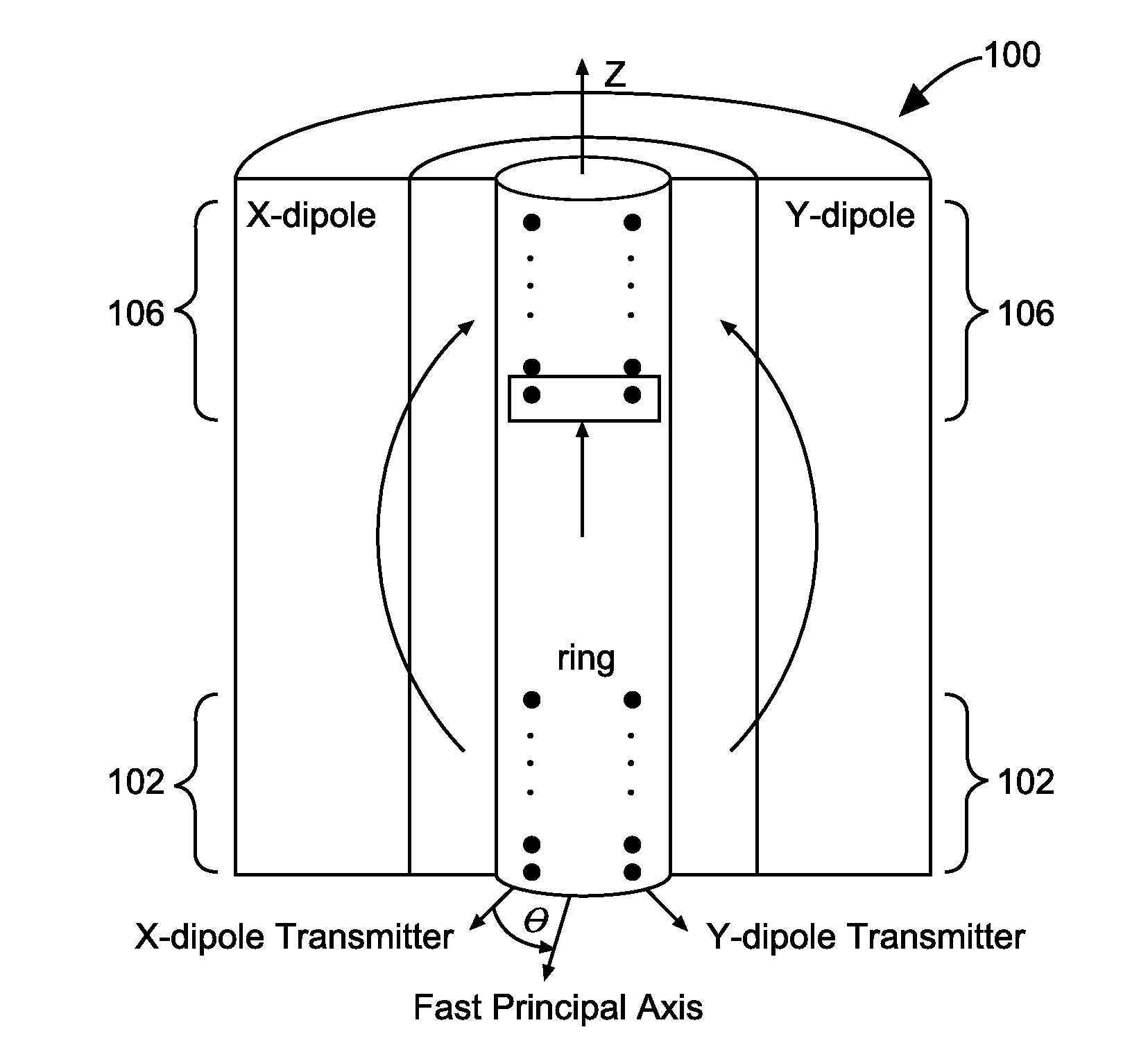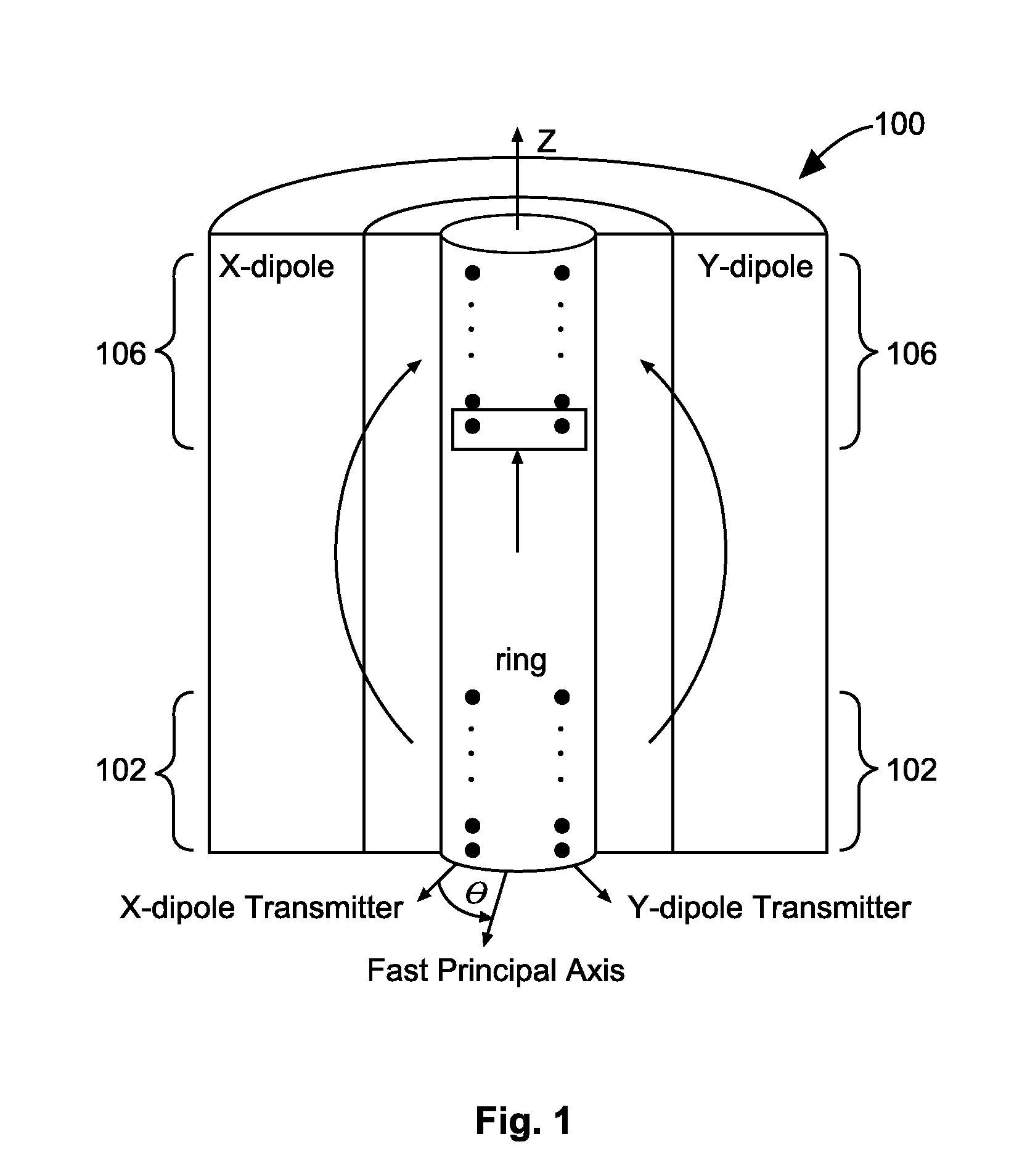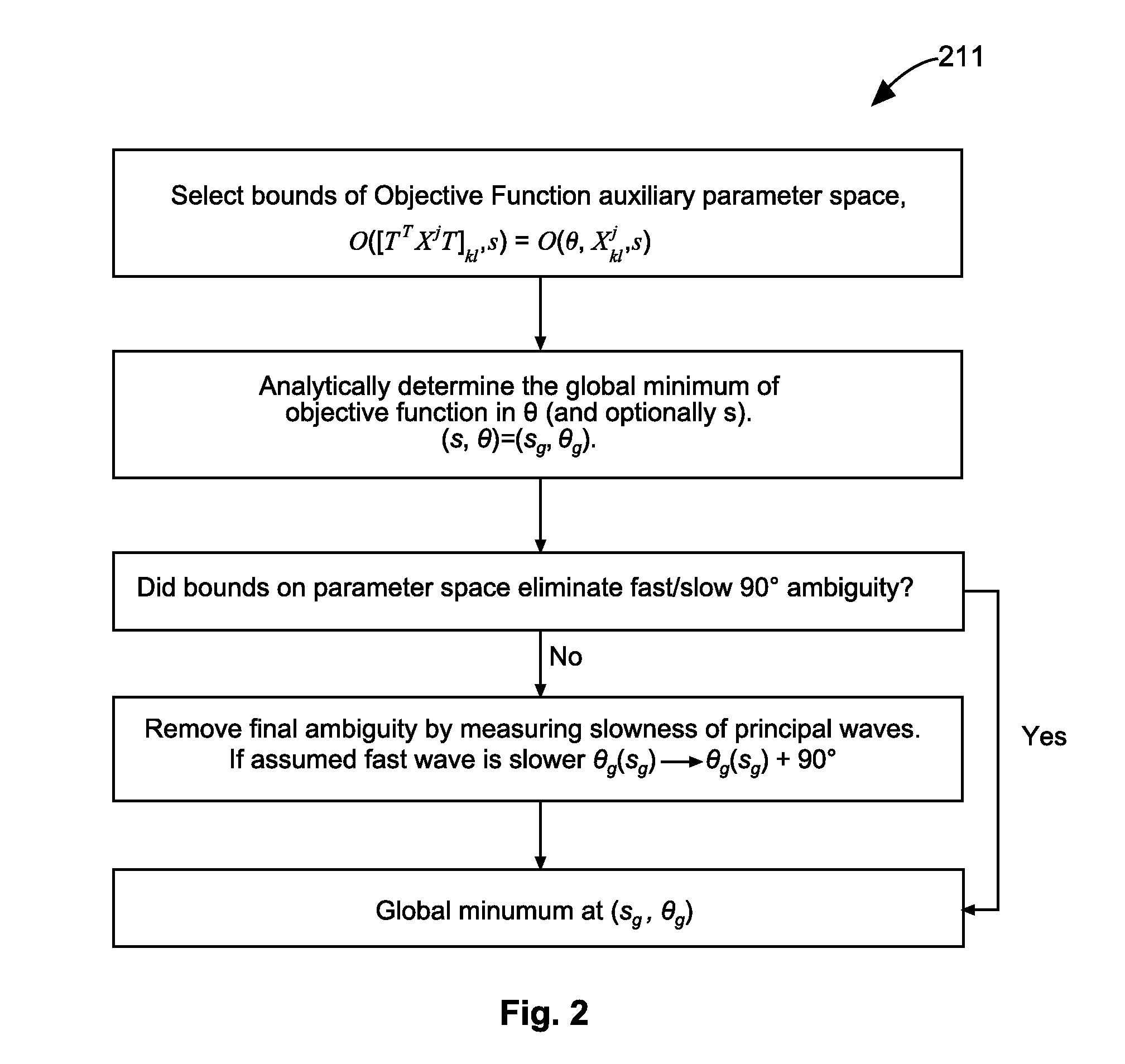Formation property determination apparatus, methods, and systems
a technology of property determination and measurement method, applied in seismology for waterlogging, instruments, borehole/well accessories, etc., can solve the problems of only spot-checking individual depths and computation costs
- Summary
- Abstract
- Description
- Claims
- Application Information
AI Technical Summary
Benefits of technology
Problems solved by technology
Method used
Image
Examples
Embodiment Construction
[0013]Algorithms for anisotropy processing of cross-dipole acoustic waveforms can operate to minimize an objective function whose parameters are the azimuth angle, θ, of the X-dipole transmitter relative to the fast principal flexural wave axis and a set of auxiliary parameters. The auxiliary parameters are used to characterize the received waveforms as functions of slowness, borehole radius, etc. Minimizing the objective function with respect to all the parameters can provide a desired anisotropy angle. The dependence of the objective function on angle is based on the assumption that the cross-dipole acoustic waveforms obey the Alford rotation equations, i.e. the 2×2 cross-dipole waveform matrix, Xkl, can be diagonalized by a similarity transformation, TT(θ)XT(θ), using a real 2×2 orthonormal matrix, T(θ). The objective function measures how well this is accomplished, for example, by minimizing the off-diagonal elements of the similarity transformation with respect to angle.
[0014]E...
PUM
 Login to View More
Login to View More Abstract
Description
Claims
Application Information
 Login to View More
Login to View More - R&D
- Intellectual Property
- Life Sciences
- Materials
- Tech Scout
- Unparalleled Data Quality
- Higher Quality Content
- 60% Fewer Hallucinations
Browse by: Latest US Patents, China's latest patents, Technical Efficacy Thesaurus, Application Domain, Technology Topic, Popular Technical Reports.
© 2025 PatSnap. All rights reserved.Legal|Privacy policy|Modern Slavery Act Transparency Statement|Sitemap|About US| Contact US: help@patsnap.com



